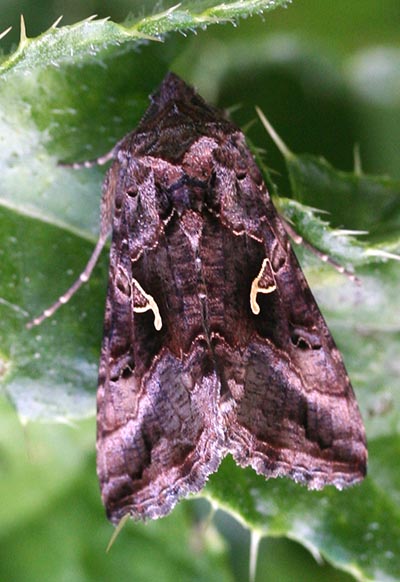We are clearly sinking down into autumn: temperatures are dropping and there are signs of an annual wind-down wherever we look. One of the most obvious signs is the large number of caterpillars that can be seen wandering out in the open, rather than feeding in hidden places. This is due to them seeking a pupation place where they will make a cocoon that they will remain in during the winter before emerging as adults next year. This is the normal overwintering strategy for most of our insects, since it makes sense to have a cosy wrapper during the coldest part of the year. That is not to say that this is the only strategy: some species overwinter as eggs, others as adults - some hibernating, others being active during only this part of the year. Different strategies have different benefits: those species that are active during the winter must put up with the colder temperatures, but there is less competition for food and there are fewer predators around.
Recent caterpillar sightings include:
The Small Tortoiseshell butterfly, on a patch of nettles which I allow to grow near the chicken run:
 |
| Larva of Small Tortoiseshell butterfly |
And the Flame Shoulder moth, which feeds on Dock and Dandelion:
 |
| Larva of Flame Shoulder moth |
It should be noted that there are two distinctly different colour versions of this larva: the other version is brown.
This is also a good time to have a look at lichens: some of the vegetation and leaves that hide them are beginning to die back. This is the rather scarce lichen,
Pannaria rubiginosa:
 |
| Pannaria rubiginosa on Oak |
Pannaria rubiginosa is an indicator of extremely clean air, growing only in the west of the country. It's said to grow on various deciduous trees, but I have only ever found it on Oak. The red objects are the purely fungal fruit-bodies which eject spores for wind-dispersal, and the coppery filaments at the top and bottom of the image are the very common liverwort
Frullania tamarisci.
F. tamarisci is, again, a mainly western species.
I had an idea that the sunny spell at the weekend might be one of the last for a while, so I dashed out to see what I could see. There were many hoverflies still flying, and I got a decent shot of
Helophilus pendulus, along with an unidentified muscid:
 |
| The hoverfly Helophilus pendulus (top) |
And also a late shot of the solitary bee
Halictus rubicundus:
 |
| The solitary bee Halictus rubicundus |
I should actually use the term 'solitary bee' with some restraint in this instance:
Halictus rubicundus is usually solitary, with each female making her own tunnel for her own eggs, but there is evidence that this bee can actually operate in a pseudo-social manner, with some females acting as pseudo-queens in aggregated colonies. This behaviour might show an evolutionary link between solitary bees and social bees, or perhaps we're seeing a change in behaviour from solitary to social in a particular species (or maybe even the reverse!)
New to my Species Index.
I found a snippet of information last week that put a completely new slant on how I understand the relationship between host and parasite/predator. In the normal circumstance, a predator or parasite cannot be present if its host is not present: the host must always precede the predator. This is simply because the predator must feed, and cannot exist in the absence of its food source. So the normal course of events is that a species arrives, perhaps through warming, or perhaps through human intervention, and survives in the absence of its parasite(s). That's one reason why invasive plants can survive so successfully: their native parasites and predators have not yet arrived. Eventually, through accident or, again, through human intervention, parasites and predators turn up and begin to keep numbers in check: a few weeks ago I posted images of a new leaf-miner on Himalayan Balsam. Another new(ish) leafminer -
Cameraria ohridella - that mines Horse Chestnut leaves arrived in England from the continent a few years ago, and has been spreading northwards at quite a rate. The damage to infected trees can be quite severe, and it seemed that unless its native parasite(s) turned up to keep a check on its numbers, some of our trees might be threatened. But this year it was noticed that infections were less severe than in previous years. Despite extensive checking, however, no specimens of any specific parasite could be found. Then we began to get reports that people had seen Blue Tits and Great Tits feeding on the larvae and pupae of the miner: it seems that they have learned about this new food source that they had previously been ignoring. This adds a new dimension to my understanding of parasite/predator/host interactions: in cases where the predator is not an obligate feeder on a host (Tits can eat many other insects), the predator can pre-exist the host and only becomes a predator once it realises that it can be a predator of the host. Fascinating.



































